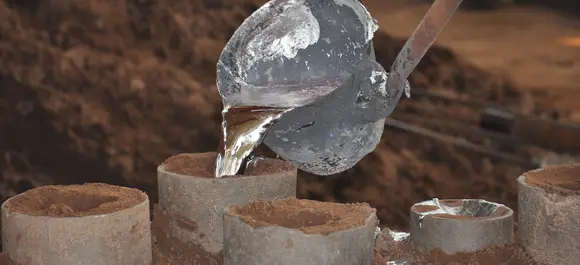Mobile:+86-311-808-126-83
Email:info@ydcastings.com
Engine Oil Collection Pan for Efficient Drip Prevention and Maintenance Solutions
Understanding Engine Oil Drip Pans A Key Component in Vehicle Maintenance
When it comes to vehicle maintenance, many car owners may not think much about the various components that make their vehicles run smoothly. However, one critical element that plays a pivotal role in the overall performance and longevity of an engine is the engine oil drip pan. This article will explore the significance of the oil drip pan, how it functions, and why keeping it in good condition is essential for any vehicle owner.
What is an Engine Oil Drip Pan?
The engine oil drip pan, often referred to as an oil pan, is a vital component of a vehicle’s lubrication system. Located at the bottom of the engine, this pan serves several important functions. Firstly, it acts as a reservoir for engine oil, collecting the oil that drains down from the engine components after lubrication has occurred. Secondly, it provides a critical barrier against dirt and debris, ensuring that only clean oil circulates through the engine.
Typically made from either aluminum or steel, oil pans can vary in design depending on the vehicle model. Some modern vehicles even utilize composite materials for added weight savings and improved corrosion resistance. The oil pan is often sealed to the engine block with a gasket, preventing leaks and ensuring that the oil stays contained within the system.
Functions of the Engine Oil Drip Pan
1. Oil Storage The primary function of the oil pan is to store engine oil when the engine is not running. This ensures that the oil is readily available for circulation when the engine starts, enabling smooth operation right from the get-go.
2. Cooling The oil that collects in the drip pan can help dissipate heat generated by the engine during operation. A well-designed oil pan allows the oil to cool slightly before it is pumped back into the engine, helping to maintain optimal operating temperatures.
3. Sump for Oil Pump The oil pump typically draws oil directly from the drip pan, creating a constant supply of oil to lubricate the engine’s moving components. This continuous cycle is essential for reducing friction and wear on the engine parts.
4. Trap for Contaminants As oil circulates through the engine, it picks up contaminants such as dirt, metal filings, and combustion byproducts. The oil pan helps trap these impurities, allowing oil filters to do their job more effectively and prolonging the lifespan of the lubrication system.
Common Issues with Oil Drip Pans
engine oil drip pan

While oil drip pans are generally robust, various issues can arise over time that affect their performance. One common problem is leaks, often caused by a worn-out gasket or physical damage to the pan itself. An oil leak not only leads to potential engine damage due to insufficient lubrication but can also pose environmental hazards.
Additionally, if debris accumulates in the pan, it can lead to clogging, restricting the flow of oil and causing inadequate lubrication. Regularly checking the oil levels and looking for signs of leaks can help vehicle owners catch these problems early.
Maintenance Tips
To ensure the longevity and effective operation of the engine oil drip pan, vehicle owners should consider the following maintenance tips
1. Regular Oil Changes Changing the engine oil at recommended intervals helps maintain the cleanliness of the oil pan and removes potential contaminants that can settle in the pan.
2. Inspect for Leaks Periodically check the ground beneath the vehicle for oil spots, which can indicate a leak from the oil pan or its gasket. Addressing leaks promptly can prevent more serious engine issues down the line.
3. Use the Right Oil Always use the manufacturer-recommended oil type and viscosity. Using the wrong oil can lead to increased wear and an eventual breakdown of the engine components, including the oil pan.
4. Professional Inspections Periodic inspections by a qualified mechanic can identify potential issues with the oil pan before they become serious problems. Mechanics can also check the integrity of the oil pan gasket and recommend replacements if necessary.
Conclusion
The engine oil drip pan, while often overlooked, serves a critical role in keeping the engine lubricated and running smoothly. Understanding its function and maintaining it properly can greatly enhance a vehicle’s performance and extend its life on the road. By prioritizing regular checks and maintenance, vehicle owners can ensure their oil pans—and, by extension, their engines—remain in top condition for years to come.
-
Understanding Metal Casting TechniquesNewsApr.02,2025
-
Understanding Exhaust Manifolds for Enhanced Engine PerformanceNewsApr.02,2025
-
The World of Metal FabricationNewsApr.02,2025
-
Key Components for Pump and Turbo EfficiencyNewsApr.02,2025
-
Essential Tools for Automotive Maintenance and RepairNewsApr.02,2025
-
Durable Valve Components for Effective Water ManagementNewsApr.02,2025











